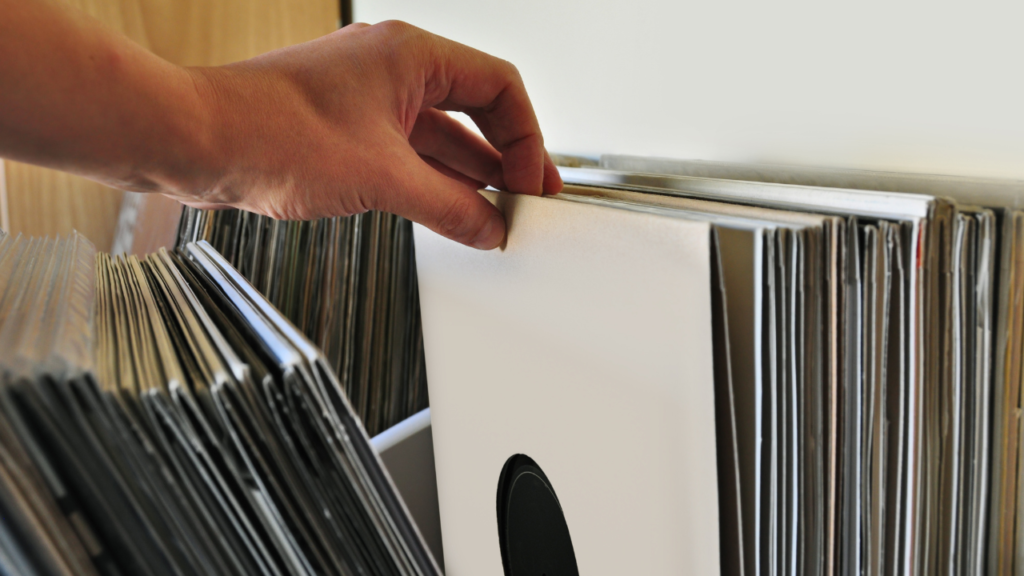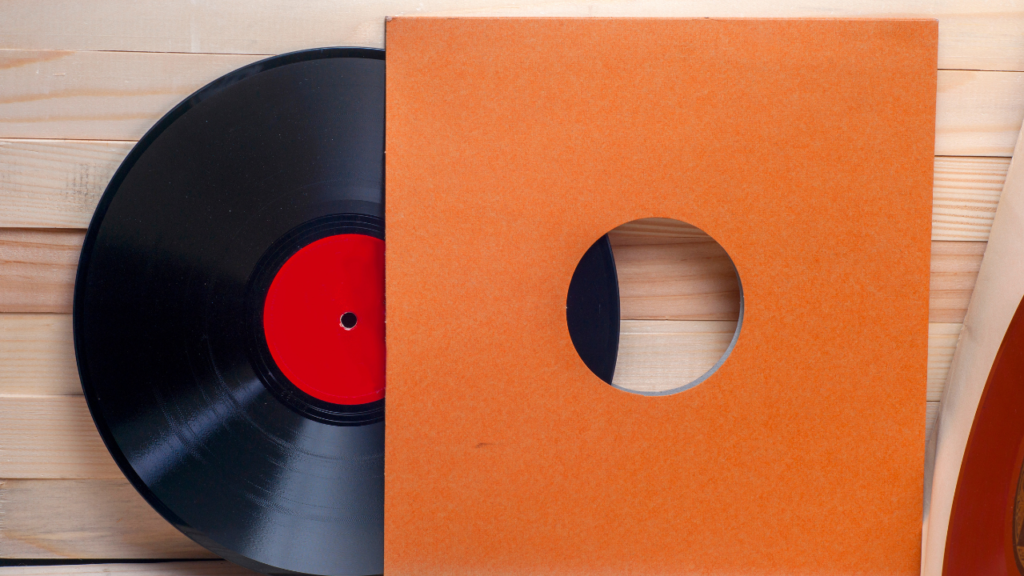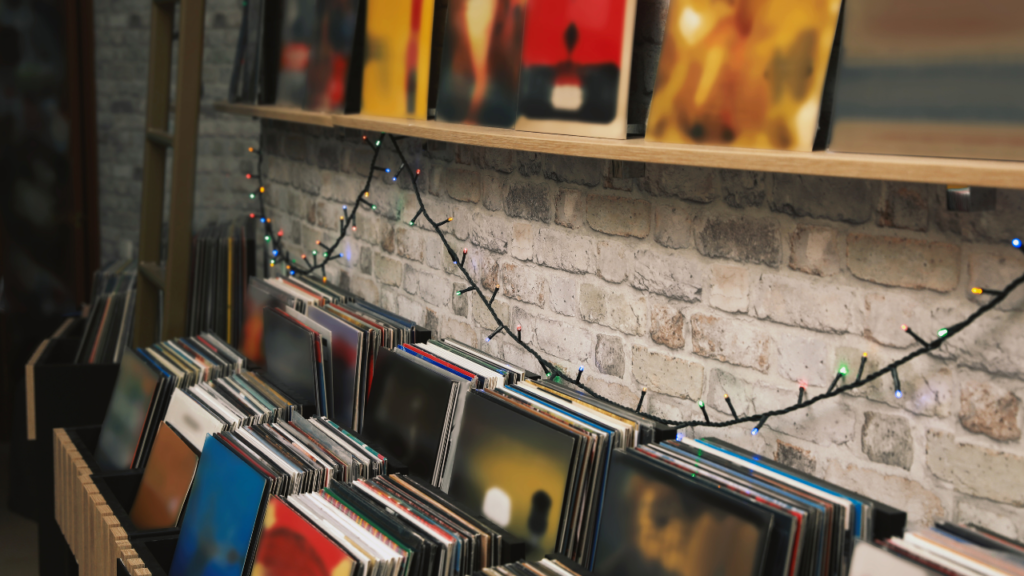One of the most common mistakes vinyl collectors make is improper storage. It’s a silent killer, slowly degrading the sound quality and longevity of your precious records. In fact, improper storage is one of the leading causes of damage to vinyl records. But why is this the case?
Vinyl records are highly sensitive to environmental factors such as temperature, humidity, and pressure. They can warp, bend, and degrade if not stored correctly, leading to a loss of sound quality and even rendering them unplayable. Understanding how to store records properly is essential to prevent these issues and protect your collection.
In this article, we’ll explore the key techniques and strategies for how to store records correctly. By understanding how to store your records, you’ll be able to protect their sound quality, maintain their longevity, and ensure they remain a treasured part of your music collection for years to come.
Introduction to Proper Vinyl Storage
Storing your vinyl records the right way is crucial for their longevity. It keeps them in great shape, prevents warping, scratches and other damage. Plus, it preserves the sound quality. Without proper storage, dust, temperature fluctuations, and improper stacking can all degrade the quality of both the record and its cover, leading to diminished playback quality and aesthetic deterioration.
Improper storage, like failing to follow best practices on how to store records, such as stacking vinyl records horizontally, can warp them over time due to uneven pressure on the grooves. Once warped, a record will lose its fidelity and may become unplayable. Therefore, storing vinyl upright and in the right conditions is crucial for its preservation.

How to Store Vinyl Records
Store Records Upright: Always store your records upright. This simple step is fundamental to prevent warping and damage. Horizontal stacking puts pressure on the grooves and can warp records over time making them unplayable.

Use Inner and Outer Sleeves: Inner sleeves, preferably anti-static, prevent scratches caused by dirt and dust. Polyethylene or paper sleeves are the best options. Outer sleeves made from polyethylene or polypropylene protect the album cover from wear, dirt and moisture. If you have a high-value collection, consider acid-free sleeves for long-term protection.

Control Room Temperature and Humidity: Vinyl records are sensitive to heat and humidity. The ideal temperature range is 65-70°F (18-21°C) with humidity level at 45-50%. High temperatures can soften vinyl, causing warping, while high humidity can cause mold growth and sleeve degradation. Use a hygrometer and dehumidifier in storage areas to maintain the optimal conditions.
Avoid Direct Sunlight: Prolonged exposure to sunlight can cause vinyl records to warp due to heat. Sunlight also fades album artwork, and reduces the visual appeal of your collection.
How to Organize a Vinyl Collection
Organizing your vinyl collection can be a fun and rewarding process. Here are some tips to help you achieve that:
categorizing your records: You can organize by genre, artist, release date, or even by personal significance. Whatever method you choose should reflect how you use your collection. For large collections, alphabetizing by artist or genre is helpful if you’re an active listener. It’s also helpful when it’s time to clean vinyl records, as you can quickly find the ones you’ve played recently.
Proper Shelving: Vinyl records are heavy, and their shelves need to be sturdy enough to support their weight. Adjustable shelving units allow you to adjust the height between shelves as your collection grows. It’s also important to know how to store records on those shelves to prevent warping and bending.
Avoid Overcrowding: Records need enough space to prevent pressure between them. Crowding can cause damage, warping or sleeve wear. Ideally, records should have a small gap between each other to reduce unnecessary contact. Proper spacing is key when learning how to store records to keep them in great shape for longer.
Optimal Shelving Solutions for Vinyl
When it comes to shelving solutions, you have a few options.
DIY Shelves: Many collectors build their own vinyl shelves, allowing for customization to fit the available space. Wood is a popular option due to its strength and aesthetic appeal, but it’s crucial that the shelves are installed correctly to support the weight.

Pre-Built Shelves: Pre-built vinyl-specific shelves, like the popular IKEA Kallax, are sturdy and have compartments ideal for storing records. These units often have dividers and space for accessories like cleaning tools and styluses. Having a dedicated spot for cleaning tools is important, especially if you’re learning how to clean your vinyl records effectively.

Pro Tip: A custom-built wooden shelving unit with adjustable dividers is ideal for collectors who plan to grow their collection. Modular shelving systems like the Kallax allow for easy reconfiguration and expansion as the collection grows.
Handling Records When in Storage
Handling your records properly is just as important as storing them correctly.
Only touch the edges of the records. Finger oils can damage the delicate grooves on records. Handling records by their outer edges helps avoid transferring oils or dirt, which can affect playback quality and attract dust.
Storage crates or boxes are good for smaller collections. They must be sturdy and moisture-resistant. Wood or plastic crates designed for vinyl provide more protection compared to cardboard boxes, which can expose records to moisture damage. When considering how to store records, it’s crucial to use moisture-resistant materials to prevent warping.
Pro Tip: When moving your collection to a new home, invest in durable plastic crates specifically designed for vinyl. They are stackable and will protect your collection during transport.
Maintaining a Vinyl Collection Long-Term
Regular Vinyl Maintenance Routine
Maintaining a vinyl collection requires a regular routine to ensure the longevity of your records. After each play, use a carbon fiber brush or microfiber cloth to gently dust the surface of the record. This removes surface particles that can embed themselves into the grooves over time. For deeper cleaning, use a record cleaning solution or record vacuum to get into the grooves and remove embedded dirt and debris. Doing this regularly helps prevent skips or distortions during playback.
Pro Tip: Avoid using household cleaning products or water directly on vinyl as these can leave residue, damage the grooves, or degrade the sound quality over time.
Regularly inspect your records for visible scratches, warping, and dirt buildup. Even small scratches can affect the playback quality, especially on older records. If you notice a record beginning to warp, it’s best to address it quickly by storing it properly and avoiding further heat exposure. Warped records can sometimes be repaired using specialized tools or methods, such as the vinyl flattening machine.
Every few months, rotate the position of your records in storage to prevent uneven pressure on any one side. This also helps distribute weight evenly across the collection, especially for larger collections where records may remain untouched for long periods. Make sure they are stored upright and not leaning, as leaning can increase pressure on one side and cause warping over time.

When to Replace Vinyl or Accessories
The stylus (or needle) is essential for accurate playback, but over time, it wears down. It is recommended to replace your stylus after 500–1,000 hours of use. Some collectors even choose to track their hours of playback to stay on top of this. A worn stylus can cause permanent damage to the grooves of your records. You may notice distortion, a loss of sound clarity, or skipping if the stylus needs replacement.
Pro Tip: If your stylus appears visibly worn (flattened tip) or you’re hearing distortion during playback, replace it immediately to avoid damaging your records. You can also use a magnifying glass to check for signs of wear on the stylus tip.
Both inner sleeves (which come into direct contact with the record) and outer sleeves (which protect the cover art) should be replaced when they become dirty, worn, or yellowed. Over time, dust and static can build up inside the sleeves, which can be transferred back to the vinyl. Acid-free and anti-static sleeves are recommended for long-term storage.
Pro Tip: Consider replacing the standard paper inner sleeves with polyethylene-lined sleeves, as they provide better protection against static, dust, and scratches.
If a record is beyond repair due to severe scratches or deep warping, it’s time to retire it. These records can cause further damage to your stylus and degrade the sound quality of your entire setup. You can keep them for sentimental value or even display them as wall art.
Tips for Expanding a Vinyl Collection
Expanding your vinyl collection can be an exciting yet daunting task, with so many options in both physical and online stores. Whether you’re looking for rare finds or new releases, knowing where to look and how to budget is key to growing your collection without spending a fortune.

For detailed advice on building and managing your collection, check out our guide on starting and growing a vinyl collection. It covers everything from where to buy records to maintaining a budget for rare pieces, helping you build a collection you’ll love.
Final Thoughts
Proper storage not only preserves the sound quality of your records but also the album artwork, ensuring that your collection remains visually appealing as well. By learning how to store vinyl records correctly, you’ll be able to enjoy your collection for years to come and pass it down to future generations. Don’t let improper storage damage your vinyl records – take action today and protect your valuable and sentimental collection.


